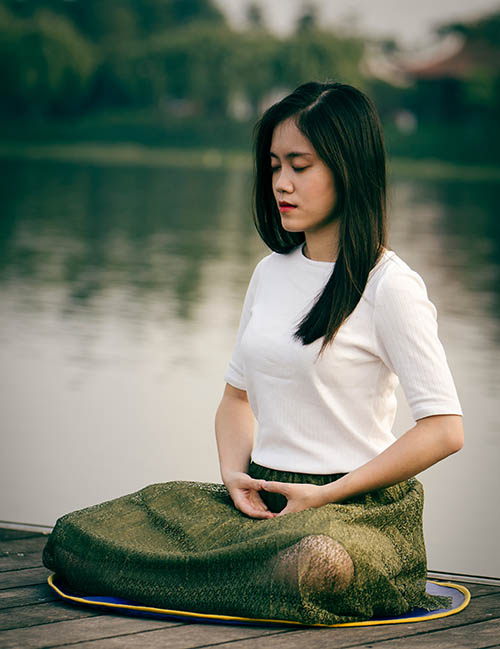Meditation
What is Meditation?
Meditation has many different purposes ranging from bringing peace into our body to discerning answers to questions about our life. Some people use meditation as a means for stress reduction and relaxation, while others use it to rebalance and refocus the mind. Meditation promotes a deep peacefulness within the body which can aid in faster recovery from illness or stress. Meditation is one of the best ways to connect with your inner being / higher self / soul aspect / God like form / Source within you–whatever you call it meditation will assist you in strengthening your connection within.
Who Should Meditate?
Meditation is something everyone can do regardless of race, religion or age. It is spiritual in nature, having no religious connection and will benefit anyone looking to bring more peace, balance, clarity and happiness in their lives.
What is the Best Way to Begin Meditating?
Often we think of meditation with a visual of someone sitting on the floor cross-legged with his palms up resting on his knees chanting “ohm’ in order to find the meaning to life. This is not necessary to achieve peacefulness, mindfulness or a deeper connection to your inner guidance. In order to begin a practice of meditating it’s best to locate a quiet place in which to set yourself up. Once you have a quiet place where you will not be disturbed you can decide if you would like to be seated in a chair or on the floor. If you have flexibility issues I suggest you sit in a comfortable chair. Next you need to have a timer handy and some soft music to meditate to. In the beginning the music will help give you focus so you are not in your thinking mind. If you have an air conditioner with a hum or something to that effect that will work as well. Once you have your music ready, set your timer for five minutes and place it in another area or room where it will not disturb you. Make sure it’s not so far away that you will not hear it go off. The purpose of the timer is so you will not have to think about how long you have been meditating. You know the timer will go off after five minutes, 10 minutes, etc., so your mind will be free to just focus on breathing and relaxing. Next, move into your position: if sitting in a chair you can rest your hands on your thighs or knees, and if you are on the floor you can sit cross-legged in lotus position or with your back against the wall and your legs out in front of you. Remember, there is no right or wrong way to sit. Close your eyes and let them softly focus on your third eye. Begin by breathing in slowly through your nose and gently out through your mouth. As you’re focusing on your breathing you should start to feel your body become more relaxed. If a thought comes into your mind while you are meditating just acknowledge the thought by using the word “thinking” at the time the thought comes in. Then go back to following your breath in and out, allowing your body and mind to continue to relax. As you become more comfortable with sitting in meditation, you can set the timer for a longer period of time. It will take time to learn to quite your mind; don’t get discouraged or give up. You will eventually get it, so be patient with yourself. It’s best to meditate at the same time each day, preferably in the morning to start your day, until you become used to meditating. It’s not something that has to be done every day but you should do it as often as you can so you can develop your meditation practice. The amount of time is not as important as the quality of time in meditating. Once a good meditation practice is built you can go into meditation very quickly so a shorter time may be spent meditating.
If you are having trouble meditating to soothing music, another way to meditate is to listen to a guided mediation, a chant or mantra. There’s so much on YouTube it will be fun to explore many different ways to develop your practice. Most importantly, enjoy your journey!



